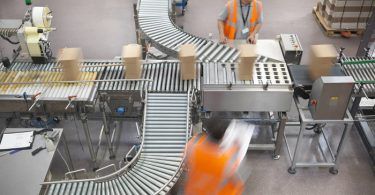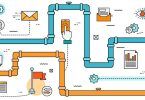For the second year in a row, Control-M has been named a Leader in the 2025 Gartner Magic Quadrant...
The BMC Beat
Control-M Recognized as a Leader in the 2025 Gartner® Magic...
Mainframe Transformation with AIOps: Smarter Operations, Greater...
Organizations that rely on legacy mainframe monitoring tools often face costly inefficiencies...
Top 10 Popular Blog Posts
Docker CMD vs. ENTRYPOINT: What’s the Difference and How to Choose
Top Paying IT Certifications in 2022
The State of SaaS in 2022: Growth Trends & Statistics
The State of SRE
CIO vs. CTO: What’s the Difference?
Python vs Java: What’s The Difference?
SaaS vs. PaaS vs. IaaS: What’s the Difference and How to Choose
Digital Transformation Metrics & KPIs for Measuring Success
About BMC Software
Workload Automation
Job Scheduling Explained: Why It Matters for Your Systems
What is job scheduling? Job scheduling is the process of managing and executing automated tasks (or...
Redefining Batch Processing: Why Workflow Orchestration Is as...
The most common misconceptions about technology often stem from outdated content. When you search...
IT Automation vs IT Orchestration: Using Both for Maximum Benefit
Control-M vs Ansible: How are they Different?
What Are Managed File Transfers? MFT Explained
Workload Automation (WLA) vs Robotic Process Automation (RPA): What’s The Difference?
Workflow Orchestration: An Introduction
IT Central Station Report: Selecting a Workload Automation Tool
Analyst Report: 2019 EMA Radar Report for Workload Automation
Putting Workflow Orchestration to Work for You
Job Scheduling vs Workload Automation: What’s The Difference?
Control-M Reviews and User Ratings: The Definitive List
Mainframe
AIOps and the Mainframe: A Smart Partnership Built for the...
In this episode of BMC AMI Z Talk, Stefanie Scott and Alan Warhurst discuss how an intelligent...
Women in Mainframe: The Legacy of Innovation Continues
The mainframe has a long history of female trailblazers, with a legacy that continues through to...
What is the Rolling 4-Hour Average?
Lowering Mainframe Software Licensing Costs
Free: Reference Guides for DB2 12 & DB2 11 for z/OS
Forrester Research: 5 Best Practices for Handling Mainframe Modernization
Bridging the Mainframe Capacity Management Knowledge Gap
Cybersecurity Incident Response on the Mainframe
Mainframe MIPS: An Introduction
Access 2019 Mainframe Survey Results
Java on the Mainframe: z/OS vs Linux
AIOps
Driving better business outcomes through multi-agent systems
Increased AI mandates are the new normal in the enterprise, and organizations are fueling agentic...
AIOps vs. MLOps vs DevOps vs. ITOps vs. Observability: What’s...
IT operations and security are changing fast. As technical architecture, requirements, and threats...
Interpretability vs Explainability: The Black Box of Machine Learning
Artificial Intelligence (AI) vs Machine Learning (ML): What’s The Difference?
Gartner Market Guide for AIOps Platforms
AIOps Machine Learning: Supervised vs Unsupervised
AIOps and the New IT Skill Sets
How AIOps Is Leading Digital Transformation
How Automation Maximizes AIOps Value
How Automation Maximizes AIOps Value
How AIOps Powers ITSM/Service Desk
Top AIOps Tools & How To Choose
DevOps
Cloud
Business of IT
IT Operations
Big Data & ML
Editor's Picks
What is the OSI Model? The 7 Layers Explained
Understanding the OSI Model The Open Systems Interconnection (OSI) model is a conceptual framework...
What Is the Internet of Behaviors? IoB Explained
In their strategic predictions for 2020, Gartner announced that the Internet of Behaviors is...































